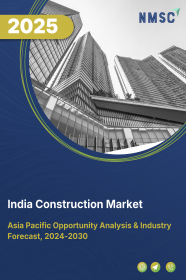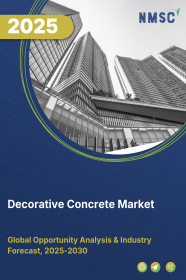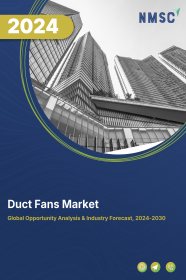
India Construction Market by Type (Renovation and New Construction), and by Sector (Real Estate, Infrastructure, and Industrial)–Opportunity Analysis and Industry Forecast, 2024–2030
Industry: Construction & Manufacturing | Publish Date: 28-May-2025 | No of Pages: 142 | No. of Tables: 108 | No. of Figures: 53 | Format: PDF | Report Code : CM2218
US Tariff Impact on India Construction Market
Trump Tariffs Are Reshaping Global Business
India Construction Market Overview
The India Construction Market size was valued at USD 884.72 billion in 2023, and is predicted to reach USD 2134.43 billion by 2030, at a CAGR of 12.6% from 2024 to 2030.
The construction market, often referred to interchangeably as infrastructure market, plays a pivotal role in the economy by overseeing the complete lifecycle of various physical structures, including infrastructure, buildings, and facilities. This industry encompasses a wide range of projects, spanning from residential, commercial, and industrial developments to civil engineering and institutional infrastructure ventures.
Collaboration among a multitude of stakeholders, such as architects, engineers, contractors, suppliers, developers, investors, and government agencies, is essential for its operations. Positioned for growth, the industry is being driven by an increased emphasis on environmentally sustainable practices, such as integrating green building materials and energy-efficient designs. Additionally, factors such as the rising per capita income in emerging economies and low-interest rates in developed nations are expected to further fuel the expansion of the infrastructure market.
Government-Backed Initiatives Drive Growth in the Market
The construction market in India is witnessing substantial growth, primarily propelled by government-backed initiatives aimed at infrastructure development and urbanization. The National Investment Pipeline (NIP) allocates a significant investment budget of USD 1.4 trillion for infrastructure projects, with substantial allocations for renewable energy, roads and highways, urban infrastructure, and railways.
This strategic investment focus is expected to catalyse the expansion of the infrastructure industry, with projections indicating a market size of USD 1.4 trillion by 2025. The growing demand for residential and urban infrastructure projects, fueled by population growth and urbanization trends, further reinforces the sector's growth trajectory.
Significant Contribution of the Construction Sector to India's Economy Boosts the Market Growth
The construction market in India holds a pivotal position in the country's economy, contributing approximately 8% to the GDP and boasting a valuation of around USD 126 billion. Robust investments in infrastructure development led to an impressive annual growth rate of 30% in the Indian infrastructure equipment sector. Moreover, as India's population continues to rise, there is a projected surge in demand for residential and commercial infrastructure, driving further innovation in infrastructure techniques and materials. The substantial population growth in India, compared to other Asian countries such as Japan and South Korea, underscores the critical role of the infrastructure sector in meeting the evolving needs of the population and driving economic growth.
Regulatory Challenges Impede Infrastructure Market Growth
In the construction market, navigating regulatory complexities presents significant barriers to market growth. Infrastructure projects often encounter hurdles due to the intricate network of government regulations and permitting procedures. Infrastructure initiatives require obtaining numerous permits and approvals from governmental bodies at various levels, including local, regional, and national.
These mandates involve strict adherence to zoning regulations, environmental assessments, building codes, safety standards, and other regulatory requirements. The protracted process of acquiring permits, bureaucratic inefficiencies, and regulatory disparities among jurisdictions can significantly prolong project timelines and escalate costs. Moreover, fluctuations in regulations or unexpected policy changes can disrupt ongoing projects and deter potential investments.
Integration of Digitalization and BIM Presents Lucrative Opportunity for Market Expansion
The construction market is undergoing a significant transformation with the integration of digitalization and the adoption of Building Information Modeling (BIM). Advanced technologies such as BIM are enhancing efficiency, accuracy, and collaboration across diverse projects. BIM, a sophisticated 3D modeling tool, empowers stakeholders to generate and manage digital representations of structures and infrastructure, facilitating improved coordination and communication among project teams.
For instance, in September 2022, the National Institute of Building Sciences (NIBS) initiated the India National Building Information Management (BIM) Program. This initiative aims to revolutionize the infrastructure sector by achieving unprecedented levels of industrial efficiency through digitalization. By addressing the inadequacy of digitalization within the India infrastructure sector, the program seeks to streamline lifecycle work processes, enhancing efficiency, cost-effectiveness, resilience, and safety for infrastructure and maintenance projects.
Competitive Landscape
The market players operating in the India infrastructure industry include GMR GROUP, Larsen & Toubro Limited, NCC LIMITED, Tata Projects Limited, Reliance Infrastructure Limited, Shapoorji Pallonji Engineering & Construction, Hindustan Construction Company Limited, Afcons Infrastructure Limited, PSP PROJECTS LIMITED , Gammon India Ltd., SIMPLEX INFRASTRUCTURES LTD, Mahindra Lifespace Developers Ltd., Man Infra construction Limited, ADANI GROUP, Sunteck Realty and others.
India Construction Market Key Segments
By Type
-
Renovation
-
New Construction
By Sector
-
Real Estate
-
Residential
-
Affordable
-
Luxury
-
-
Commercial
-
Retail Buildings
-
Office Buildings
-
Hospitality
-
Healthcare Facilities
-
Educational Institutes
-
Entertainment Ventures
-
-
-
Infrastructure
-
Transportation
-
Airport
-
Port
-
Rail
-
Road
-
-
Water and Wastewater
-
Energy
-
Telecommunication
-
- Industrial
-
Manufacturing Plant
-
Warehouses
-
Power Plants
-
Oil Refineries
-
Chemical Plants
-
Key Players
-
GMR GROUP
-
Larsen & Toubro Limited
-
NCC LIMITED
-
Tata Projects Limited
-
Reliance Infrastructure Limited
-
Shapoorji Pallonji Engineering & Construction
-
Hindustan Construction Company Limited
-
Afcons Infrastructure Limited
-
PSP PROJECTS LIMITED
-
Gammon India Ltd.
-
SIMPLEX INFRASTRUCTURES LTD
-
Mahindra Lifespace Developers Ltd.
-
Man Infra construction Limited
-
ADANI GROUP
-
Sunteck Realty
REPORT SCOPE AND SEGMENTATION:
|
Parameters |
Details |
|
Market Size in 2023 |
USD 884.72 Billion |
|
Revenue Forecast in 2030 |
USD 2134.43 Billion |
|
Growth Rate |
CAGR of 12.6% from 2024 to 2030 |
|
Analysis Period |
2023–2030 |
|
Base Year Considered |
2023 |
|
Forecast Period |
2024–2030 |
|
Market Size Estimation |
Billion (USD) |
|
Growth Factors |
|
|
Companies Profiled |
15 |
|
Market Share |
Available for 10 companies |
|
Customization Scope |
Free customization (equivalent up to 80 working hours of analysts) after purchase. Addition or alteration to country, regional, and segment scope. |
|
Pricing and Purchase Options |
Avail customized purchase options to meet your exact research needs. |

















 Speak to Our Analyst
Speak to Our Analyst

















